
The Hundred Line is a conceptual nightmare, and I love it
I write this preamble as a defeated man, utterly and truly beaten by The Hundred Line -Last Defense Academy-. This is an unrelenting beast of a video game that takes no prisoners. Every bit of marketing by Too Kyo Games leads Kazutaka Kodaka (Danganronpa, Rain Code) and Kotaro Uchikoshi (Zero Escape, AI The Somnium Files) was on the mark. This is the largest game they've ever made. It's a behemoth, an active threat to the free time in your life. You should be scared of what they've unleashed on the world. In a sane world, it would not exist.
It might be one of the most respectable pieces of art I've played in ages. I’m 55 hours in as of writing this, and am nowhere near done. For weeks, I’ve been untangling the staggeringly deep web of plot that somehow contains 100 unique and distinct endings. They have explicitly mentioned in marketing that this game has no “cheap” bad ends to pad that number. I have three cleared at the moment. Three. After all my time bingeing it, I have a firm grasp of the kind of game Hundred Line is, but this story’s scope is astonishing and seemingly endless.
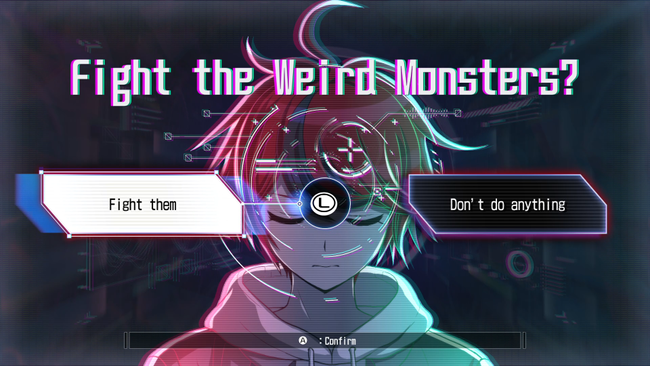
Takumi Sumino finds himself drafted into the Special Defense Unit against his will to defend the mysterious Last Defense Academy over a period of 100 days against a legion of alien invaders. He and his fellow classmates share the power of Hemoanima, which can be activated by stabbing themselves in the heart with a blade called an Infuser. Their strangely high-tech school has read all their DNA and can essentially print out a copy of them if they die on school grounds. Over 100 days, Takumi and his friends need to keep the school safe to protect the world and solve the mystery behind this strange war they've been dragged into.
Both Kodaka and Uchikoshi’s work have been a part of my life since my teenage years. They were foundational to getting me to fall in love with adventure games, defining what I look for in similar games. Aesthetically, this feels like a direct successor to the Danganronpa series: Kodaka is at the helm creatively, Rui Komatsuzaki is back on art direction, and Masafumi Takada is back as the composer. Your base is explorable via third person side scrolling. Rooms in the school are presented in first person, with a cursor to investigate certain parts. The music even feels like it pays homage to the Danganronpa scores. It's not Danganronpa, but it feels like the proper follow-up I've been hoping for. The style is here, the energy is here. The biggest key difference is the chosen genre, pivoting to using a strategy RPG this time to complement the VN presesntation for the storytelling.
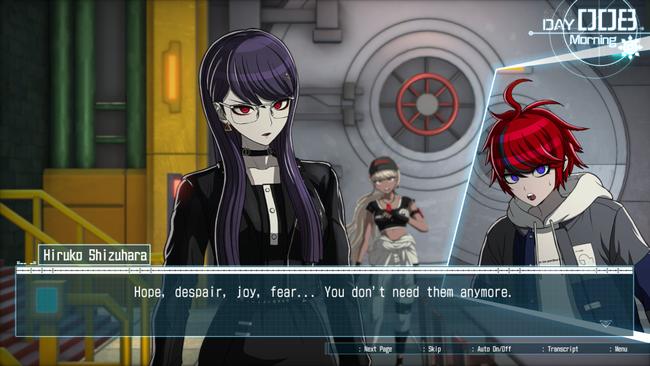
It was a bit difficult for me to fully separate this from Danganronpa as I initially worked through my first playthrough. While this is a completely new IP, Kodaka very clearly draws attention to its similarities. If you’re not familiar with his previous work, you can absolutely play this on its own. You’re just missing an extra layer of playful hostility toward his established fanbase, which extends to any player. In a sort of coy meta way, the writing often draws attention to what you’d expect from a game clearly trying to follow up on Danganronpa V3, playing on tropes this team has dabbled in before to keep your mind racing on where it could be all going. I frankly adore it, and was thrilled to experience this exact flavor of video game masochism that I felt was missing from Master Detective Archives: Rain Code.
Hundred Line’s playable cast of characters are just as miserable as I was hoping they’d be. Almost all of them have a single “bit” that defines who they are as people. You’ve got someone obsessed with his sister, someone who speaks entirely with self-deprecation, a snobby rich girl, and an obnoxious young man who hates doing anything for free. They don't really mesh as a unit, but that friction is crucial to the tone they're trying to set. The sense of isolation you feel being with people who are largely unrelatable gives this game a brilliantly lonely, and encourages you to put the effort in to get to know more about these strange characters you're trapped with. If I had to pick my favorite of the bunch, I’d say it’d be the sickly Eito and the Killing Game loving Darumi. While every character ever penned exists as some kind of mouthpiece for their writer, she really feels like she exists to poke at the premise in ways that explicitly break the fourth wall. She’s a massive fan of any killing game media, and will blatantly point out when the events of the story feel similar to tropes from other games.
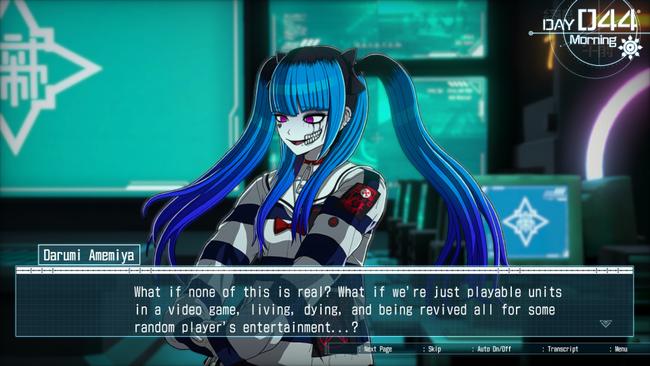
There was a series of optional dialogue I found of her where she outwardly name drops several iconic dark VNs (I don't want to spoil the surprise, so you'll just have to track her down every day). She’s just blatantly and unapologetically a character that exists to reference other media, but I found it difficult to hate her inclusion. Takumi will often call her personality terrible, as she regularly offers quirky interjections for the Special Defense Unit to start murdering each other. He’s not wrong, but I couldn’t help but just adore her. As if Kodaka is playfully teasing a certain type of fan of his. I’m sure hidden somewhere under the many routes is one dedicated to fleshing her out, and I’m quite interested to find it. On a slightly related note, I’m very proud to say I might be one of the first ever players to blindly stumble into a certain Eito CG on my very first route. Too Kyo showed in the marketing of the game, and it has had fans' imaginations racing ever since. If you know, you know. I’m pretty proud of myself.
Despite featuring a cast of unpleasant characters who hate collaborating with each other, the lingering threads of mystery kept me patient with where their arcs were going. Because our cast is practically immortal, basically all of them get more screen time than you’re used to. Just like Danganronpa’s dwindling cast serves the gameplay structure of a killing game, Hundred Line’s largely ever-present cast does the same for a tactical RPG. As both playable units and characters, I grew to be quite fond of these characters the more I played the game.

If you’re looking for a lean SRPG, you’re not going to get that here. Your first playthrough will end on a note that begs for players to dive deeper, and you’re not going to get a satisfying experience with just a single ending. My first run took me 40 hours, and it feels like it was only scratching the surface. The pacing of this game is slow and abnormal, but I almost think that something would be lost from the experience if it wasn’t as huge as it was. You probably could get a great and concise game out of everything here, but I think the raw self-indulgence is an equally powerful artistic statement. I respect their choice to make the script of this game massive. I cannot believe how much video game I have left at the time of writing this. I cannot believe I have 97 endings left. What could this game possibly have left to show me after 55 hours? I keep asking myself this, and I keep stumbling upon new surprises. This game feels like working full-time, and you happen to have one of the best jobs in the world.
Having said that, I’d only really recommend this to people truly looking for a game to invest all their time into. I’m not allowed to mention any specifics on the events after my first playthrough, but I think it's worth mentioning that I’ve found the tonal shifts of the other routes I’ve stumbled upon to show a tonal flexibility that has been really exciting. My grasp of what Hundred Line is aiming for with its 100 endings is to be an exhaustive love letter to the medium of Visual Novels. Some of the routes I've played so far feel like I wandered into a completely different video game with the same characters. With how much Too Kyo has stated this is an all-or-nothing effort for their studio to get a hit, with the risk of bankruptcy looming over its success, I would expect something much more safer than what we got. The Hundred Line is far from a normal video game, and to truly get the most out of it you'll want to try and see and do everything.
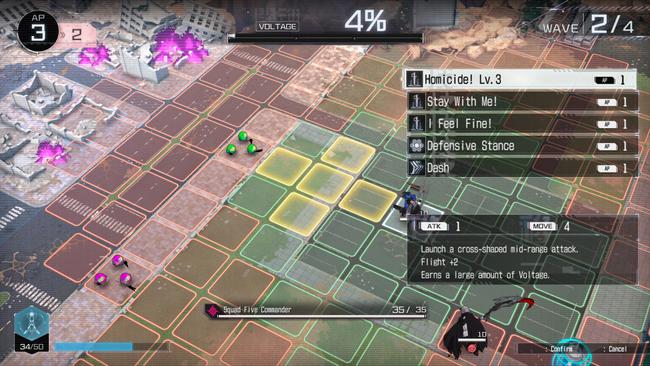
While there’s a lot of juicy VN storytelling to dive into, I think I’m most pleased to say that Hundred Line is a fantastic SRPG. I’m very particular with SRPGs, with very specific things I look out for in the ones I end up latching onto. Game feel is crucial, as the digital chess pieces need to feel good to move from one square to the next. Next is the difficulty balancing, as I personally love the feeling of just barely winning a challenging battle. Finally, I look for a satisfying character progression, ideally one that has a bit of novelty to it. And if there’s a striking visual style to go with it all? Even better.
I wasn’t expecting the game to check all these bosses, and I’m surprised that this team managed to design such a fun SRPG on their first try. Battles are snappy, challenging, and attacks are flashy. After 55 hours, I’ve never been bored of combat, which is genuinely impressive. There’s so much energy here I’ve seen lacking in this genre for years. At the moment, I’m thinking this might be one of the best SRPG battle systems of the 2020s, but I’ll have to see how I feel after another 100 hours or so.

Sprinkled across every map are major and minor enemies, and for Defensive battles, they’ll always be gunning for the generators that keep a barrier around the Last Defense Academy. Hundred Line rewards aggressive play styles, as your pool of action points will increase by one every time you kill a major enemy. Your goal becomes to find a way to utilize units to play as efficiently as possible, killing major invaders to build up a large number of actions to focus down boss enemies that’ll typically be found at the end of a series of waves for every mission. Every attack will build up your voltage, allowing characters to use special abilities. These, and other certain powerful skills, will put the character that uses them in a fatigue state for the rest of the turn.
The trick is that your first attack will keep the movement range of that character limited, so you’ll need to pick carefully on where to send a unit unless you’re able to get that or fatigue cured by the main healer unit of the party. Deciding when to use your special attacks to build up AP for your heavy hitters is crucial, but you need to keep in mind who you’re fine with being unusable for a whole turn. You’ll also need to worry about the minor enemies, who can quickly swarm you or the generators if not properly dealt with. The health and damage numbers in this game aren’t very high, so carelessness can be punished quickly. It can be overwhelming, but the flexibility to strategize in how you pick off enemies made sure there was never a dull moment.
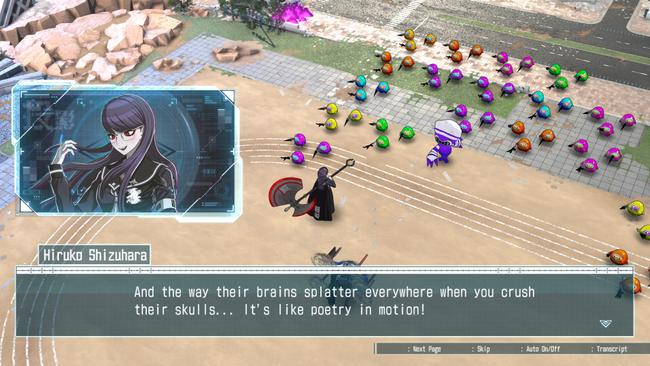
If you find yourself in an unfavorable situation, there are some ways to turn things around. Not only does Takumi’s special ability allow you to redo any wave or battle, but everyone has a desperation attack as they reach the end of their life. Doing this will kill that character for the rest of the battle, but will ensure you can get out a free special attack and an additional 100% (of a total of 300%) of voltage. I love when SRPGs offer fast-paced battles that have you making key decisions with immediate consequences, and I’m hoping further missions continue to ramp up the difficulty.
When you’re not defending the school, you’ll decide how Takumi spends his time during the 100 days. Your friends will find a spot to hang out in every day of Free Time, and you can spend time with them. Doing so will allow you to learn more about them and build up Takumi’s social skills, which can help unlock progression gates in your character skills. Your damage numbers are on the lower side, and there is no level-up system. You’ll upgrade your characters by gathering resources out in the apocalyptic world surrounding the Academy, and by gaining BP from battles.
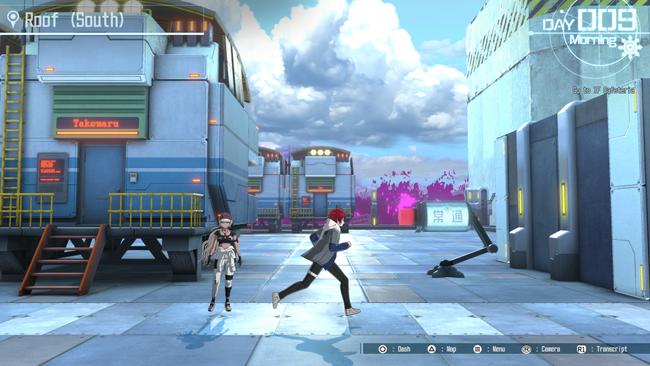
These will be used to improve or unlock your skills for all of your characters, and this is important because every single available character will be deployed for every mission. While you can play favorites, there is no picking a party from a list like in many games of the genre. You don’t even decide the positions they deploy in for major battles, so you’ll need to make sure everyone’s skills are up to date. When I realized this was what was happening, I was pretty excited. There’s a tendency to make a lot of class variants for SRPGs, especially ones with permadeaths, but that means you’ll have a lot of useless characters in both the story and the gameplay. Every party member of The Hundred Line serves a unique role in battle.
I've been a fan of these two creators for over a decade now. I can't say yet if this is their best work, but this is their artistic ethos taken to the logical extreme. This could be one of best games of the year. I just need to see how all the pieces fully come together. The Hundred Line still scares me conceptually. This is the kind of game you'd come up with as an ignorant teenage game enthusiast with no ideas about the reality of game budgeting. The ideal collaborative work between two titans of the Visual Novel medium. The fact that they were able to come together to craft a genuinely well-made SRPG as well? Baffling. I'm baffled. I'm in awe. I have so many endings left, and I've never lost my motivation to keep plugging away. There’s still so much left to uncover with this game, and I feel like I haven’t even seen half of what it’s capable of.
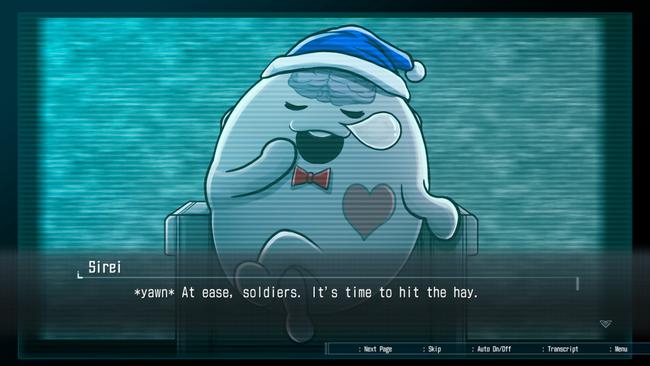
I genuinely adore the bits of story I’ve found so far, and navigating through it to find all the endings is as thrilling as it is exhausting. If you’ve never played a game from either of these creators before, I think a great comparison would be navigating through a maze. This maze has an exit, but you know that exit is locked. Not only do you need to find the exit, but you also need to find the keys needed to unlock the door. There supposedly is a true end, and I need to find it. Every turn you take takes you to a new section of the maze you’ve never seen before, and so far, all of them have provided me with a new key. The process of keeping track of the staggering list of concurrent mysteries is the true joy, and I can only hope it’s leading somewhere good.
There’s no doubt in my mind that Hundred Line is a fantastic SRPG, but I think it’s only fair for me to take more time before I make any declarative statement on the quality of its story as a whole. Unraveling this story, though, is just as fun as I was hoping it to be, even if it’ll take you a bit to get a full grasp on what Hundred Line is aiming for. I genuinely love what I’ve played so far, but I was not prepared for just how much of it they were capable of making. I’ll have to see if every answer lives up to my expectations, but I’m impressed at the moment with how the budget seems to align perfectly with a frankly ridiculous amount of ambition. I’m still finding my way through the maze, and I’ll have to let you know when I get out.